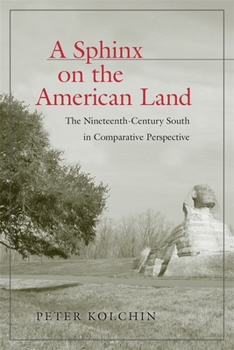Sphinx on the American Land: The Nineteenth-Century South in Comparative Perspective (Walter Lynwood Fleming Lectures in Southern History)
(Part of the Walter Lynwood Fleming Lectures in Southern History Series)
One reason that the South attracts so much interest is that its history inevitably involves big questions--continuity versus change, slavery and freedom, the meaning of "race," the formation of national identity, the struggle between local and centralized authority. Because these issues are central to human experience, southern history properly conceived is of more than regional interest. In A Sphinx on the American Land, Peter Kolchin explores three comparative frameworks for the study of the nineteenth-century South in an effort to nudge the subject away from provincialism and toward the kind of global concerns that are already transforming it into one of the most innovative fields of historical research.
The volume opens with a comparison between the South and the North, or what Kolchin terms the "un-South." This basic context, he explains, provides an essential backdrop for understanding the South; how one conceptualizes "southernness" has meaning only in terms of what it is not. Turning to the cohesion and variations among what he calls the "many Souths," Kolchin reminds us that there has never been one South or archetypal southerner. Internal distinctions--whether geographic, class, religious, or racial--ultimately raise the question of whether one can properly speak of "the" South at all.
Finally, Kolchin explores parallels between the South and regions outside the United States--or "other Souths." He considers a number of ways in which the South can be studied in a broad international setting, paying particular attention to the similarities and differences between the emancipation of southern slaves and Russian serfs. In an eloquent afterword, he ponders the nature and importance of comparative history.
Kolchin examines how scholars have approached each of his comparative frameworks and how they might do so in the future, making A Sphinx on the American Land at once a work of history and of historiography. Illustrating the ways in which southern history is also American history and world history, this elegant, profound volume proves Kolchin to be one of the stellar southern historians of his generation.






